Recipes that Preserve Recent Memories
Our focus on beloved recipes need not always look decades back: a shrimp salad that celebrates friendship and travel memories
Before I get into this week’s newsletter, I just realized that six months ago—to the day—I published my first Long Live the Recipe Box newsletter! A few months prior to that, I had zero idea I might be starting a second newsletter. Thanks so much for being here and for being part of this conversation about gathering and preserving beloved recipes. Ready to roll for the second half of this first year!
You know how sometimes, when you cobble together a meal from leftovers with a bit of this-and-that from the fridge and cupboards, you end up with something really outstanding that sticks with you as a meal to remember?
That’s what happened a dozen or so years ago, with leftover shrimp from the previous night’s dinner, some herbs and onion, garlic bread we hadn’t finished, a bit of this and that… It all melded together for a lunch of shrimp salad that is packed with outstanding memories of time spent with friends on a fabulous vacation in the Charleston area. It’s just one example of how recipes from recent experiences can be as worthy of our recipe-preserving efforts as family recipes from a generation or two ago.
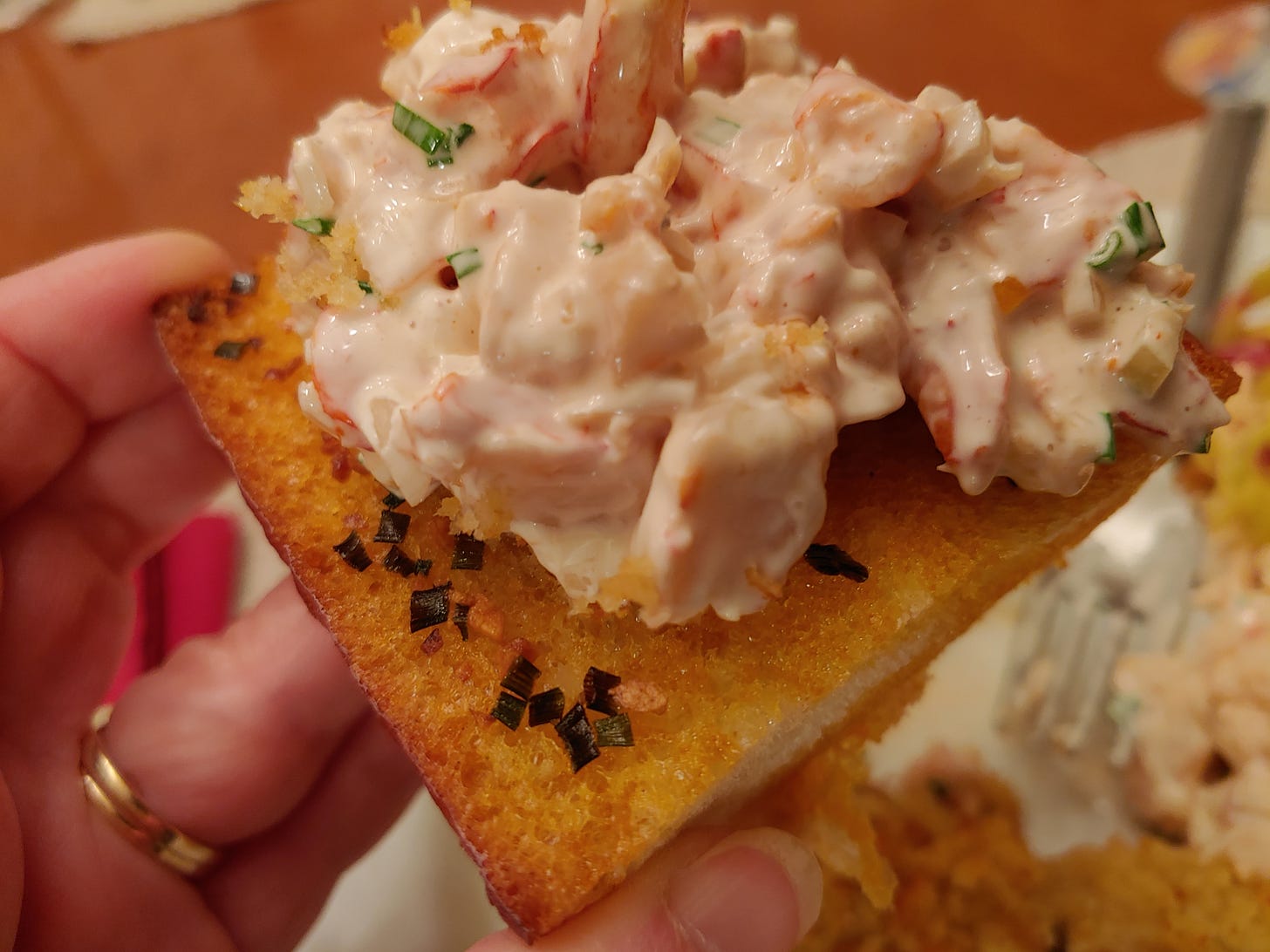
When I began leading recipe-box-related workshops, I typically referenced “family heritage” recipes as the focus. Which is only natural. Recipes handed down through the generations, dishes we first experienced as a kid, food traditions that connect us with our family—those are often the foundations for our beloved collections.
But not everyone has a trove like that to draw from, or a culinary life that was fostered by family dishes and relatives that loved gathering and sharing recipes. As one of my tai chi friends said about that potluck I wrote about recently, she has no collection of family recipes, she learned more about cooking from a neighbor. I encouraged her to embrace that neighbor’s influence and consider recipes from them to share. I hate for folks to get too hung up on trying to unearth family heritage recipes if there simply isn’t much available from that resource. Think about any person who’s provided a recipe or culinary inspiration, be that a neighbor, colleague, teacher, friend, whoever.
As for the “heritage” part, I spent so much time early on using my mom’s tattered recipe folder as a touchstone for this work—I got a bit myopic about older recipes being a prime focus. It eventually occurred to me that if we focus only on recipes from decades past, what will we have to show for celebration of more recent events, explorations, connections?
I’m now more certain of the recipe-box collections I want to encourage folks to create, add to, preserve, and share. They should considering any and all sources of recipes that hold any kind of meaning, memory, connection for them. And they can draw from events, gatherings, meals from the recent past and even last week! Today’s favorite recipes will be treasures to look back on in the future.
So, back to that shrimp salad. The seemingly-unassuming recipe sparks a whole string of memories, the product of a few different adventures we’d had the previous couple of days on that trip:
The shrimp came thanks to a tip we’d gotten from locals while getting pedicures our first day, leading us to Shem Creek a few days later and buying five pounds of just-caught shrimp.
A great trip to a farmers market where we loaded up with cucumbers, corn, tomatoes, sweet onions, green beans, new potatoes, peaches, pimento cheese.
The visit we’d had with celebrated cookbook author Nathalie Dupree in her Charleston home, which included a stroll in her garden and herbs she plucked for us to take back to the house we were staying at. (Nathalie passed away earlier this year, here’s a beautiful tribute written by
.)
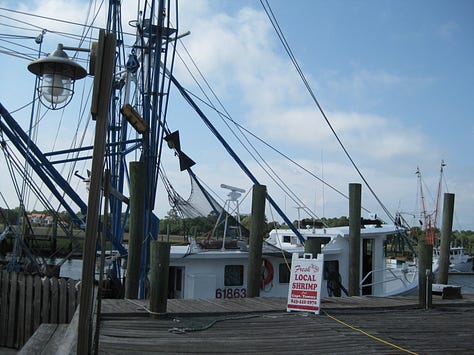
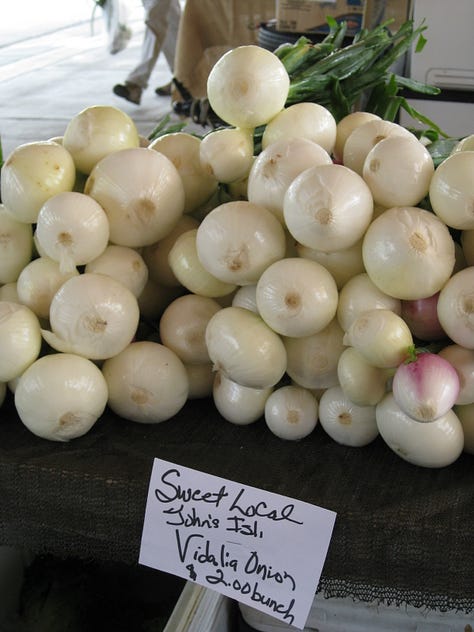
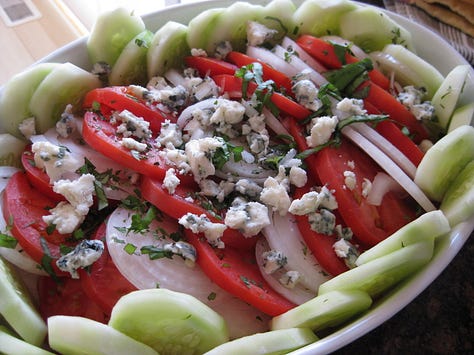
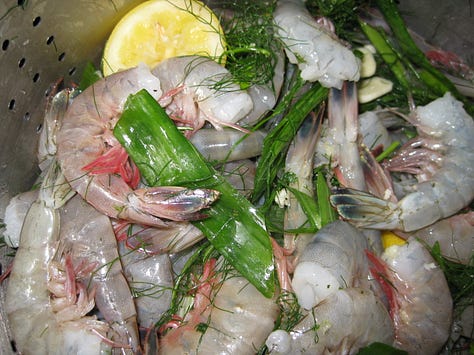
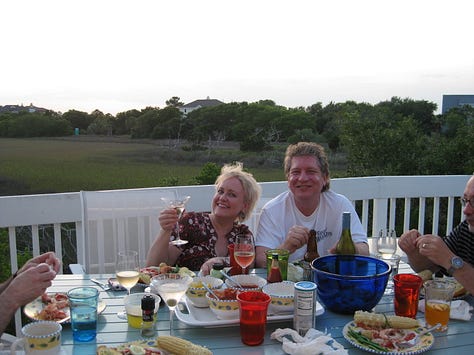
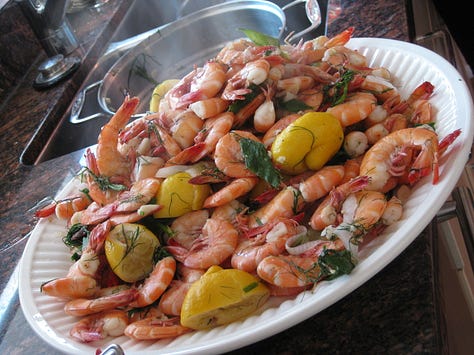

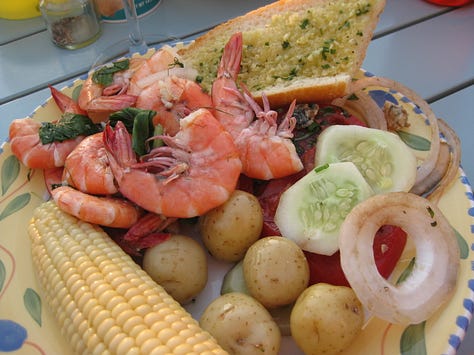
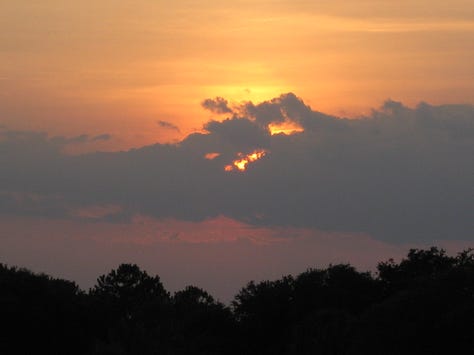
Our resulting feast is one I’ll not soon forget: the shrimp were steamed very simply with sliced garlic, the green tops from the onions, herbs from Nathalie’s garden, lemon halves; a salad of sliced cucumber, tomatoes, sweet onions with blue cheese scattered over; corn, green beans and potatoes simply steamed; and old-school garlic bread made with lots of butter, minced garlic, chives and other herbs. Oh, and happy-hour pimiento cheese while we sipped peachy cocktails.
All that set the stage for an exquisite shrimp salad we threw together for lunch the next day.
Before settling in for after-dinner games, we peeled the extra shrimp, putting the meat in the fridge and the shells in a pot with water. Those shells simmered gently for the rest of the evening, infusing a maximum of their flavor into the liquid. After straining, we continued to reduce the liquid until it thickened to a glaze that we popped in the fridge.
For the next day’s lunch, we chopped the shrimp, diced some sweet onion and whipped up a batch of mayonnaise. Those got tossed together, along with a drizzle of the shrimp stock reduction and some salt and pepper. That combo was made even more delicious by spooning it on leftover garlic bread.
One of the tricks about recipes that are inspired by a very particular moment in time—no recreation of them can truly replicate those exact ingredients, the adventure of gathering them, the people who were part of it, the experiences that led to such a fabulous meal.
But that doesn’t deminish the value of that recipe to put a smile on our face, bring back great memories, spark stories to share with other friends you serve the dish to. Plus there’s the joy of reaching out to the original troupe to say, “remember that time we were in Charleston and tracked down those amazing shrimp on Shem Creek?”
It’s similar to the encouragement I share about trying to find or recreate those “lost recipes” that we long to have in our collections. Despite best efforts, lots of research, testing various versions, we may not ever feel that we’ve arrived at THE recipe. I think it’s important we give ourselves a bit of grace and realize that achieving a close approximation still serves the purpose of connecting us with a loved one, an experience, a memory that we cherish. That exploration to recreate it is part of its rich story.



